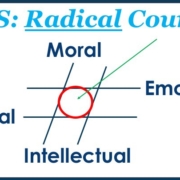What we’re getting wrong about “Command and Control” and why you need it to succeed.
Have you heard leadership and management gurus rubbishing military-style command and control leadership practices?
The military has a field order paragraph called Command and Control. The gurus presume command and control means someone barking orders (command) and micromanaging compliance (control).
If you’ve ever been in a good military unit, you probably scratch your head at what they mean by the term versus what you’ve seen with your own eyes.
Only the worst leaders in the U.S. military try to lead that way.
The only ones who’ve been successful using that approach fought even bigger idiots who barked orders while no one listened to them (or, even worse, did listen to them).
When you look at what the terms actually mean, you’ll notice that command and control is precisely what good leaders have done across time and cultures.
Command means to be clear about responsibility and accountability: the authority to make decisions, set priorities, and enforce standards, while exemplifying the behaviors expected of everyone in the organization.
You make decisions. You have the authority to do so unilaterally, but only the most benighted and ineffective make it a habit. Sure, there are times in combat when you need to do so. As a matter of normal practice, wise commanders take the time to co-create so they gain buy-in among the ranks. Doing so creates trust. Good leaders draw from that well of trust only when absolutely necessary.
Command creates clear accountability. You are answerable to your boss (or board), your employees, and your peers and partners for your mission and desired outcomes.
You must exemplify the values they expect of every team member. In the U.S. Civil War, for example, commanders rode on horseback so they could see and be seen. The message was simple: I’m the most vulnerable person on this team; everyone is shooting at me. If I can do my job, so can everyone else.
The highest casualty rates in the Civil War were colonels and brigadier generals. Their examples of courage inspired their unit’s performance.
The good news for business leaders: no one is shooting at you.
Control identifies the scope of the person’s responsibility, which includes communication and cooperation.
Effective delegation includes identifying the mission and desired outcomes along with the boundaries of your direct report’s decision-making authority. The boundaries may include territory, resources, legal and regulatory restrictions and the like. You have your direct reports let you know when they get close to the boundary to coordinate and preserve your decision-making space.
Control delineates your expectations about cooperation between your direct reports. You cannot afford the silo-effect where people operate in fiefdoms and don’t cooperate for the common good. You know you have a silo challenge when everyone reports progress but the overall situation is going downhill.
Creating objectives that rely on the cooperation of your direct reports yields a whole-is-greater-than-the-sum-of-its-parts effect.
Are you ready to use command and control properly?
- Set clear objectives by identifying the task you want someone to do and the outcomes you want them to achieve. X so that Y is your winning formula.
- Use co-creation to gain buy-in for decisions and changes – it makes accountability much easier.
- Model the behaviors you want from your employees. You lose trust with a do as I say, not as I do approach.
- Set up your direct reports for success when you delegate by giving them the X so that Y, co-creating boundaries, and asking “what does ideal support from me look like?”
- Identify lead and supporting actors for each company objective, so your direct reports are clear on their roles and cooperation responsibilities.
Practice command and control like this, and you’ll find your company improves trust, communication, cooperation, and performance.
Are you interested in a company offsite that will make a positive impact for many years? Battlefields, historical venues, and national parks are terrific venues for adventure experiences that build trust and capacity.
Send me an email or schedule a call to discuss if a leadership off-site like this is right for you.










